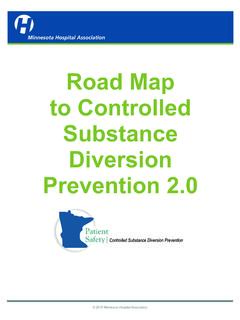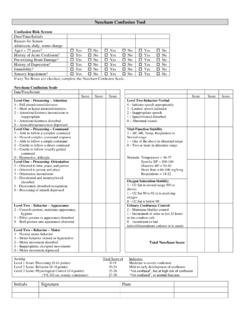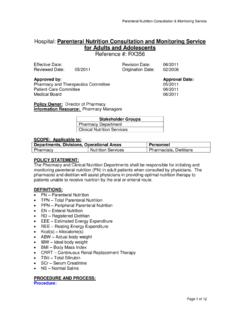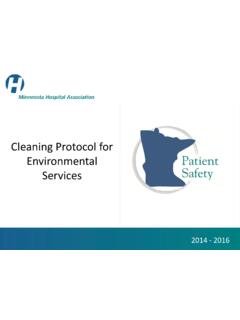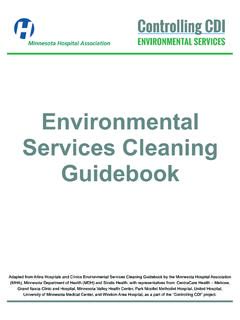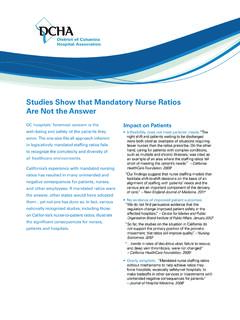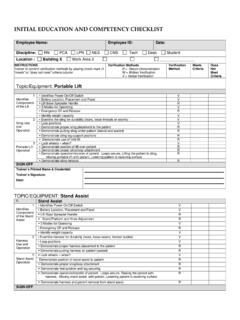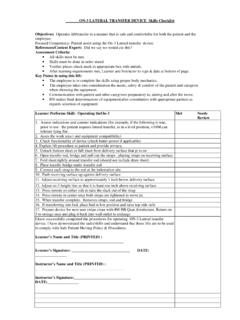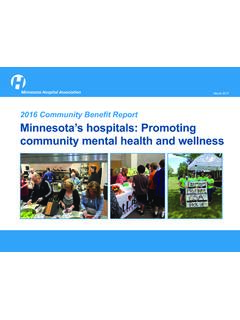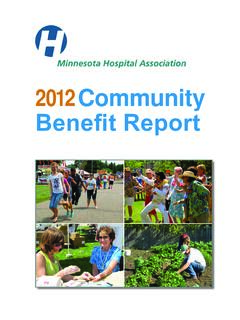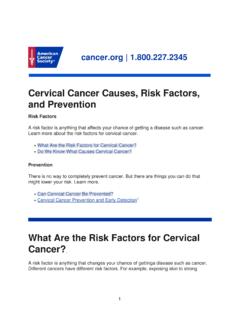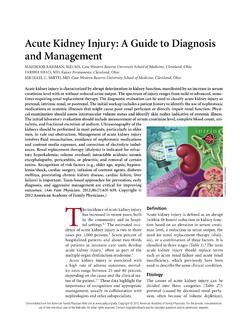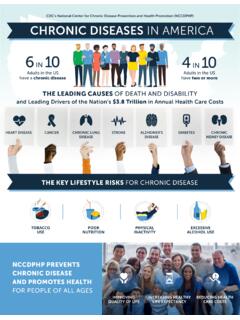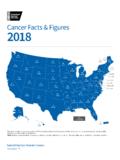Transcription of PROTOCOL PRESSURE ULCER PREVENTION - mnhospitals.org
1 *Indicates change Printed By: gorec Printed: September 25, 2008 Page 1 of 5 PROTOCOL PRESSURE ULCER PREVENTION Effective Date: September 25, 2008 Number: PROT0082 Issuing Department: PATIENT CARE SERVICES Submitted by: WOC DEPARTMENT Approved By: Signature on File Date: 09/2008 Supersedes: 6/05 Reviewed by: Date: Wound, Ostomy Continence | 8/08 Nursing Service | Pt Care Practice & Outcomes | 9/08 | | | | PERSONNEL: All accountable for patient care. PATIENT OUTCOME: 1. Maintenance of intact skin in the patient who is at risk for breakdown. 2. Patient/caregivers verbalize knowledge of PRESSURE ULCER risk factors , assessment, PREVENTION and early treatment. SUPPORTIVE DATA: 1. Repositioning includes small shifts of weight ( , shifting patient using reusable underpad to change PRESSURE points, adjusting pillows, lowering head of bed, adjusting tilt, etc.)
2 2. North Memorial Nursing Philosophy, Caring Framework, and Cultural Caring 3. General Nursing Standards PROTOCOL 4. Incontinence, Urinary/Fecal, PROTOCOL 5. Specialty Beds Policy and Procedure 6. Trauma Bed PROTOCOL 7. PRESSURE ULCER Treatment PROTOCOL 8. Preventing PRESSURE Ulcers Patient and Family Information * 9. Cervical Collar Hard PROTOCOL High Risk Diagnoses: Peripheral Vascular Disease Myocardial Infarction Stroke Multiple Trauma Musculoskeletal disorders/Fractures GI Bleed Spinal Cord Injury Paraplegia Neurological disorders ( , Guillain Barr , Multiple Sclerosis) Those with unstable and/or chronic medical conditions ( , diabetes, renal disease, cancer) History of previous PRESSURE ULCER Preterm neonates factors That Contribute To PRESSURE ULCER Development.
3 Age greater than 75 years Existing PRESSURE ULCER Immobility Procedure which immobilizes patient for greater than one hour Devices ( , oxygen tubing, splints, TED stockings, pneumo boots) Sedation Sensory deficits Nutritional deficits/Weight loss Excessive exposure to moisture ( , incontinence, excessive perspiration, wound drainage) Those exposed to friction and shearing PROTOCOL PRESSURE ULCER PREVENTION Effective Date: September 25, 2008 *Indicates change Printed By: gorec Printed: September 25, 2008 Page 2 of 5 Early and ongoing assessment of patients at risk for skin breakdown is essential. PREVENTION involves not only identification of patients at risk but also a detailed plan of interventions which address and minimize the effects of each risk factor.
4 ASSESSMENT/EVALUATION INTERVENTIONS/KEY POINTS NURSING DIAGNOSIS: Potential alteration in skin integrity. 1. Identify patients at risk for developing a PRESSURE ULCER upon admission and daily for at risk patients or with any change in condition. 1. a. Refer to Clinical Flowsheet, Braden Scale in electronic medical record (EHR). Determine an adult patient's risk for developing a PRESSURE ULCER by using the Braden Risk Assessment. 1). A patient is considered at risk if their Braden score is: 15 18 = Mild risk 13 14 = Moderate risk 10 12 = High risk 9 or below = Very High risk 2) Advance your patient to the next risk level in the presence of: a) age over 75 b) chronic illness c) hemodynamic instability ( , diastolic blood PRESSURE less than 60 mmHg).
5 B. Utilize Zynx Plan of Care: PRESSURE ULCER - Risk of * c. Initiate PRESSURE ULCER PROTOCOL when skin integrity is impaired. * d. Consult WOC nurse when patient identified at very high/high risk, , Braden Score less than 12. 2. Assess specific vulnerable PRESSURE points. a. Supine: occiput, sacrum, heels b. Sitting: ischial tuberosities, coccyx c. Side-lying position: trochanters d. Reddened areas which do not fade within 30 minutes e. Dusky or cyanotic areas f. Under devices ( , TEDs, pneumoboots, splints, collars, tubing) 2. Inspect the skin at least every 8 hours. a. Avoid vigorous massage over bony prominences. b. Patients with dark pigmentation will demonstrate a cyanotic area, warmth or complain of pain over the bony prominence.
6 * c. Remove TEDs, pneumo boots, splints collars every shift, evaluate skin and document; (see PROTOCOL Cervical Collar, Hard). PROTOCOL PRESSURE ULCER PREVENTION Effective Date: September 25, 2008 *Indicates change Printed By: gorec Printed: September 25, 2008 Page 3 of 5 ASSESSMENT/EVALUATION INTERVENTIONS/KEY POINTS 3. Assess skin for exposure to moisture from incontinence, wound drainage or perspiration. 3. Cleanse and dry skin at routine intervals and at the time of soiling using a low residue soap, or perineal cleanser. a. Initiate the Incontinence, Urinary/Fecal PROTOCOL in the incontinent patient. b. Moisturize dry skin with lotion. 4. Assess mobility and activity status. 4. Maintain or increase patient's level of activity, mobility and range of motion unless contraindicated.
7 Individualize to the patient's needs based on risk and level of mobility. a. Schedule regular and frequent turning and repositioning at least every 2 hours ( , alternating supine, left lateral and right lateral positions). b. Refer to algorithm in the Specialty Bed Policy and Procedure when patient is immobile and/or in bed with head of bed less than 30 to determine if additional PRESSURE reduction is necessary. * c. Document in EHR; Clinical flowsheet, Patient cares/ADLs, activities, positioning. 5. Identify sitting status. 5. For sitting position in bed (head of bed greater than 30 ), cardiac chair or wheelchair: a. Assist/instruct patient to shift weight at least every 15 minutes. b. Reposition at least every 30 minutes if patient cannot independently perform PRESSURE relief exercises every 15 minutes.
8 C. Consult PT/OT for assistance in seating, positioning, and wheelchair cushion options. 6. Assess nutritional status. *6. Consult Nutrition Services for a nutritional assessment and plan when Braden score less than 12 and/or nutrition on Braden evaluation less than 3. PROTOCOL PRESSURE ULCER PREVENTION Effective Date: September 25, 2008 *Indicates change Printed By: gorec Printed: September 25, 2008 Page 4 of 5 ASSESSMENT/EVALUATION INTERVENTIONS/KEY POINTS 7. Identify factors which increase shearing, friction and/or PRESSURE . a. Shearing: Tissue layers sliding against each other; , sliding down in bed. b. Friction: Skin rubbing against other surfaces; , elbows and heels rubbing against sheets. c.
9 PRESSURE /Friction: , heels resting on mattress, devices such as oxygen tubing, cervical collars, casts. 7. a. 1) Keep head of bed less than 30 unless contraindicated. 2) Promote proper positioning, transferring and turning techniques. b. 1) Use reusable underpad, trapeze or lift sheet to lift, not drag, patient. 2) Utilize pillows or positioning devices to prevent skin surfaces from rubbing together. c. 1) The immobilized patient should have heels suspended off bed by using pillows or heel suspension boots, available in dispensing. 2) Heel and elbow protectors are best used for reducing friction and should not be used for PRESSURE reduction. 8. Assess patient/family knowledge of PRESSURE ULCER PREVENTION , risk factors and early treatment.
10 8. a. Teach patient/family about the causes and risk factors for PRESSURE ULCER development and ways to minimize risk. Provide Preventing PRESSURE Ulcers Patient and Family Information handout. Provide patient info, preventing PRESSURE ulcers via patient care standards. b. The patient or caregiver, or both, should understand the importance of the following: 1) Conduct regular inspection of skin over bony prominences. (Individuals can use a mirror if necessary to inspect their own skin.) 2) Follow appropriate skin-care regimens. 3) Use measures to reduce friction/shearing. 4) Avoid vigorous massage of bony prominences or reddened area. 5) Include routine turning, repositioning, and the use of PRESSURE -reducing devices if patient is confined to bed and/or chair.
